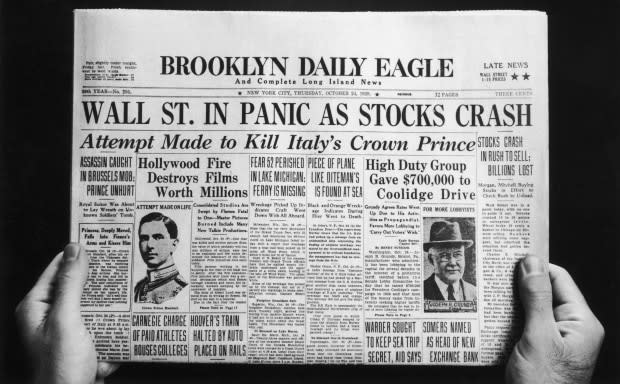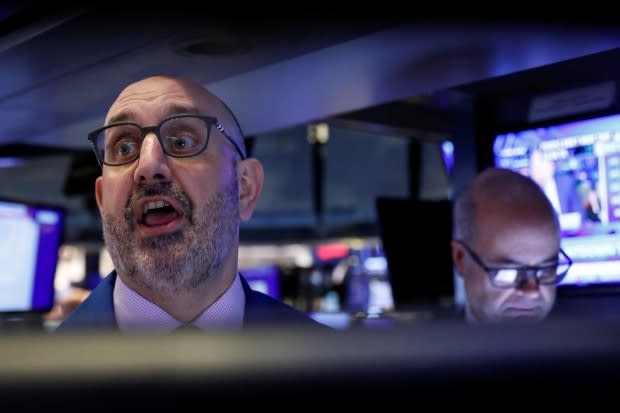Lessons from the Great Crash of 1929 for investing in an ever-rising market: Don Pittis
Phew. The dangerous month is safely behind us, so it finally feels less risky to talk about stock market panics without being accused of helping to precipitate another October crash.
For mysterious reasons October really is crash month, though in most years markets do perfectly well during the month, and most analysis shows that September is the worst overall month for stocks. But October's ominous reputation comes well earned.
The bear market that stretched from 2007 to 2009 began in October, though the initial one-day decline was moderate. The Panic of 1907, a three-week plunge in markets that fell by half, certainly began in October. Indisputably, 1987's Black Monday, the largest one-day percentage market drop and one that seemed to come out of the blue, was an October phenomenon.
Historically, the Great Crash of 1929 remains the apocalyptic touchstone of October market crashes not just for its suddenness and unexpectedness but because of what came after, namely the crumbling of the financial system that led to the Great Depression.
Run for the exits
Of course getting October out of the way is no proof against sudden market plunges. A list of global market panics shows sharp market declines can come in any month, especially when there is an external cause that shocks investors into running for the exits.
One of the most disturbing parallels between now and the time of the Great Crash is that it came in what seemed like a period of economic health. Unemployment had declined. The auto industry, a key driver of the North American economy, was still going strong.

"There was no reason for expecting disaster," wrote Canadian economist John Kenneth Galbraith in his 1954 history of the time, The Great Crash 1929. "A depression, serious or otherwise, could not be foreseen when the market fell."
In his book, which I remember gobbling up in my youth, Galbraith was contradicting the conventional view that the stock market was reacting to a slowdown in the economy.
Growing nervousness
That's not to say that as the markets rose to dizzying heights there wasn't plenty of fear that they would eventually have to come down again. But greed had won out and there was no special reason a crash should happen on those particular days.
In a recently published extract titled What We Talk about When We Talk about Stock Market Crashes from his most recent book, Yale economist Robert Shiller, who has noted similarities between current markets and those of the 1920s, observes that the market conflagration did not have an obvious spark.
"Economists still puzzle over the stock market crash of Oct. 28, 1929, a date on which no sudden important news occurred other than the crash itself," writes Shiller.
One interesting explanation proposed for the sudden crash was technology. Shiller himself has described the Trans-Lux Movie Ticker, a newfangled method of projecting changing share prices that brought awareness of rising stocks to the masses.
But according to Joe Janes from the University of Washington, the real trigger for the crash was that during the initial day of declines on Oct. 24, unprecedented trade volumes due to the increased popularity of stocks meant the ticker could not keep up.
Janes says it was well known the technology was not up the task, but when markets were rising no one really cared.
"When it started to fall, and the ticker fell behind, and then when it became clear that things were getting worse fast, it was the not knowing — and moreover not knowing what you didn't know — that helped to fuel the panic," says Janes in his podcast Stock Market Ticker Tape, 1929.
Pulling the trigger
Certainly there are plenty of reasons technology could once again help destabilize the stock market. Already the proliferation of online discount trading has shown ordinary traders they have trouble exiting when markets fall suddenly.
Automated trading that contributed to the Flash Crash of 2010 where markets fell 1,000 points in minutes and the market lost $1 trillion in value before bouncing back, could have a much worse effect if traders had been fearing a wider crash. Certainly the growth of trading by artificial intelligence means people aren't really sure how the AIs will react in the next sharp market decline.

Another lesson from 1929 that may not have been learned is the growth of investment trusts, tradable collections of stocks that turned out not to be liquid when traders decided they wanted out. While modern exchange traded funds are not the same thing, the democratizing of share holding through ETFs that faced selling pressure on a market panic could compound market disruptions, as nervousness grows.
Of course those are just structural reasons for a market decline. If traders decide they are flying too close to the sun, external shocks could initiate a tumble. For example, a new and sudden outbreak of conflict in the Middle East, while good for Canadian oil producers, could destabilize markets.
An attack on demonstrators in Hong Kong could have an effect similar to the Tiananmen Square crisis of 1989 that caused a sharp slide in Chinese GDP growth. With China's new global clout any shock to its economy would likely have a worldwide impact on markets.
As Edward Yardeni, chief economist and investment strategist at Yardeni Research, has said, "Crashes usually happen when people are not expecting them."
The trouble is of course that one of the other lessons of 1929 is that even after many wise people have suggested the market has risen too high, what Galbraith called "the mass escape into make-believe" can continue to carry it much higher.
Follow Don on Twitter @don_pittis


